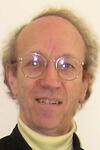Richard Hadsell
To test the validity of macroscopic nuclear models with respect to their description of states having large angular momentum, a search for previously unobserved high spin states of nuclei in the mass region A = 21-23 was conducted. In particular, it has been expected that the prediction of rota tional band termination, made by microscopic models with truncated configura tion spaces, could be compared with observations of states lying near or perhaps even above the predicted termination.
The nuclei 21Ne, 22Ne, and 23Na were investigated using the reactions 9B(16O, dγ)23Na, 9Be(16O, αγ)21Ne, 12C(13C, αγ)21Ne, and 13C(13C, αγ)22Ne. Particle detection efficiency was increased, without allowing angle-dependent energy shifts to degrade the resolution, by employing a radially position-sensitive detector subtending emission angles from 0° to 15°. Coincidence observations utilized both NaI and Ge(Li) detectors for the gamma rays, and angular correlations in Litherland-Ferguson Method II geometry were measured for states in 22Ne.
Contrary to expectations, on the reaction 9Be(16O,d)23Na appeared to populate how spin states selectively in the residual nucleus. Furthermore, no new members of the ground-state rotational bands could be identified. Failure to observe the gamma decay of the expected 15/2+ member of the ground-state band in 21Ne leads to the suggestion that such a state decays primarily by alpha or neutron emission.
The measurements reported here unfortunately indicate that heavy-ion induced reactions will be somewhat less useful in probing high angular momentum nuclear configurations than earlier, more preliminary measurements have suggested.
